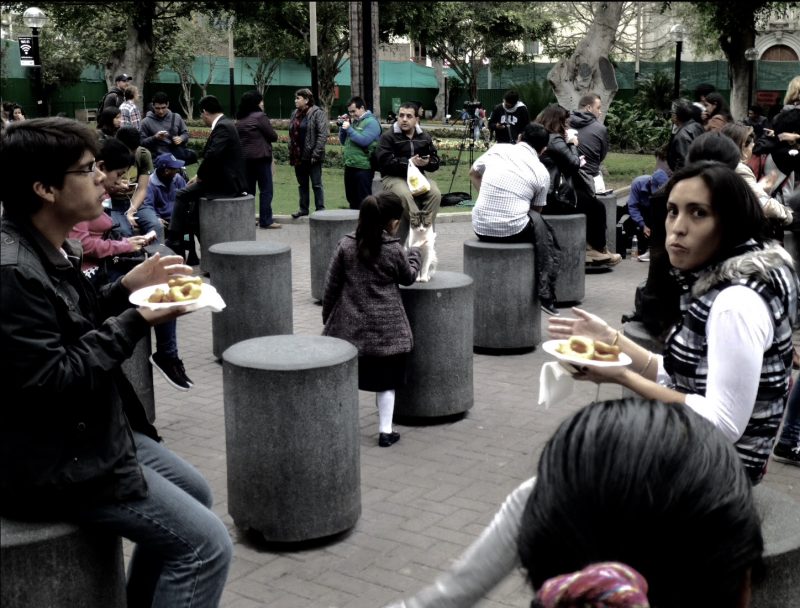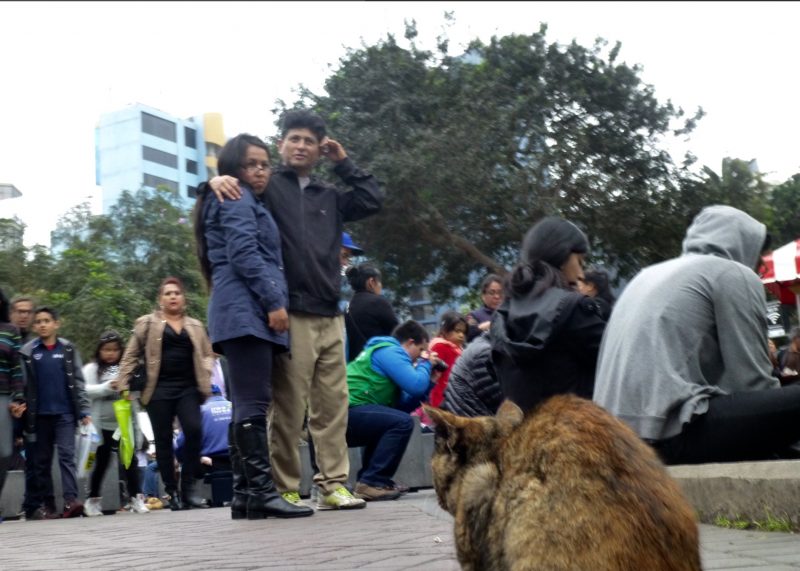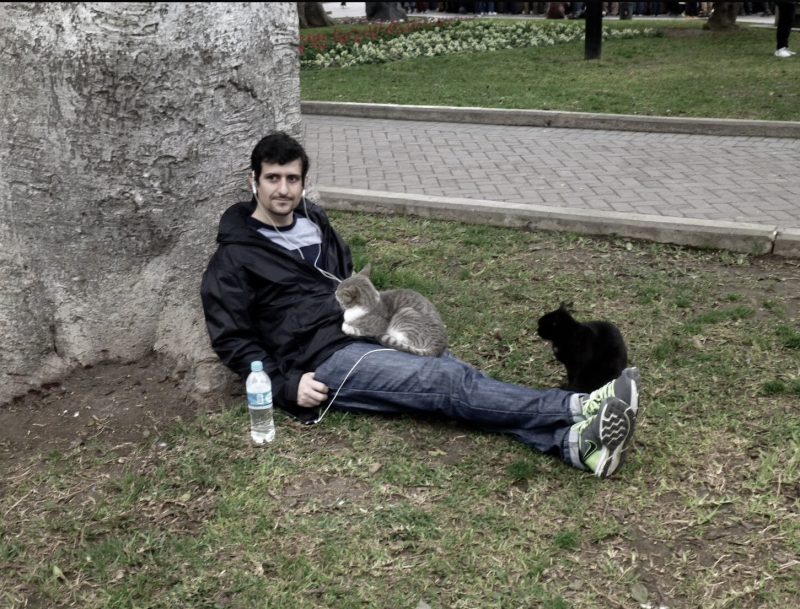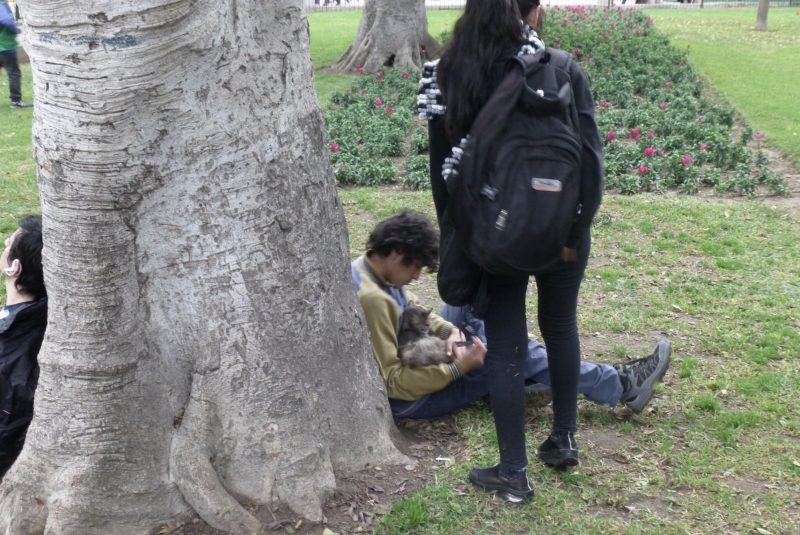My husband took these awesome shots on the beach yesterday. My eyes pop WOW! when I view sunsets here.



Inspiration and encouragement for your own personal journey of awakening …
My husband took these awesome shots on the beach yesterday. My eyes pop WOW! when I view sunsets here.


In my lifetime, I’ve been lucky to visit off-the-grid places where I’ve experience nature at its finest; far away from the madness and clutter of everyday life. Spaces where I found solitude and experienced a powerful oneness with nature and slept like a baby.
As a child, I often fell asleep on a flat, hot rock in the middle of the Arizona desert waiting for a spaceship to rescue me. I felt certain they had left me in the wrong place with the wrong family.
As a young woman, I made a childhood dream come true when I followed Heidi’s footsteps on a trek through the Swiss Alps. That night I slept in a picturesque chalet, nestled high in the hills above Hergiswil, Switzerland with a stunning view of mountains and lakes. An eiderdown quilt kept me cozy and warm.
I once napped atop the ancient rock fortress of Masada, Israel, after a rugged dawn hike to the top of the plateau. A most delicious rest.
While crossing the Indian Ocean, in monsoon season, much to my surprise sleeps were deep with lots of telling dreams.
I knew I had experienced the most unusual places to sleep in remote locations until July of 2016 when my husband and I toured Peru’s Sacred Valley with a group of other tourists.
Our bus stopped alongside the Urubamba River, near a railroad track, and our guide suggested we get out and look at a structure across the river. He pointed skyward to a strange shape stuck to the pristine mountain side.

“What is it?” I asked.
He said it was a “sky lodge” attached to the sheer rock face—one of three transparent sleep capsules suspended above Peru’s Sacred Valley of Cuzco. Each capsule measured 24 feet long, and 8 feet in height and width, equipped with four beds, a dining area, and a private bathroom with a big window view across the Peruvian landscape. Solar panels powered Interior lighting.
I borrowed a pair of strong binoculars and inspected the strange sight. The pods looked like space ships stuck to the cliffs.
“How do guests get there?” I asked.

He explained. Lodgers must first climb 400 feet up the cliff face—a rough climb, with 400 iron rungs and a steel cable fixed to the rock to help climbers navigate the toughest parts to reach the sleeping pods.
“For the intrepid adventurers,” a fellow tourist remarked.
I could imagine the spectacular views over the cliffs of the mystical valley and the Urubamba River flowing below. To watch stars explode across the night sky would also be awesome.
But I couldn’t imagine the nerve-racking climb, much less a good sleep while dangling from the side of a sheer cliff. What about the roaring winds? I wondered when a strong gust of wind blew past. “And just how does one get down?” I asked.
“Zip-lines, seven hair-raising zip-lines,” a fellow tourist (in the know) chimed in.
For foolish thrill seekers. I shuddered, shook my head no, crossed my heart for the thrill seekers, and crossed the sky lodge adventure off my bucket list. No dangling sleep necessary.
Excerpt from Susan Joyce’s book in progress Journeys—Short Travel Stories from around the world.
My husband, Doug, and I flew from Lima, Peru (sea level) to Cusco, Peru (Elevation: 11,152′) on July 12th, 2016 with a group to visit ancient sites in Peru and Bolivia.
The plane landed, doors opened, and oxygen got sucked from my lungs. I gasped for air. My vision blurred. Dizzy, I clutched seat backs and handrails to exit the plane. Doug extended his arm for support but he also struggled to breathe in the thin mountain air.
I knew altitude sickness could affect people and that it can be dangerous; even lead to death. Since I had hiked high mountains without problems, I figured I was low risk. The risk is low if one increases altitude in a gradual way. The risk is high if one climbs over 1,600 feet per day. And we climbed to an elevation of 11,152 in one hour and twenty minutes.
A world traveler, I didn’t expect complications but took high altitude pills for four days before. Just in case. The pills can cause minor side effects; tingling fingers, a strange taste. Better than dead.
A bus took us to our hotel in the historic district of Cusco, the ancient capital of the Incan Empire. We checked in at the desk and climbed the staircase to our second-floor room. My eyes teared non-stop and my left eye throbbed in pain. I clung to the banister for guidance. Not far, I thought struggling to catch my breath with each step. When we entered our room, we collapsed on the large firm bed. Exhausted, I assured myself I had mild altitude sickness (AMS). I’d be fine once I acclimated to the high altitude.
We met our group in the lobby later and discussed our various symptoms. Some travelers had headaches, others earaches, one a bloody nose. Lucky me; a throbbing eye. No blood.
Our local guide pointed to small bowls filled with coca leaves in the dining room and suggested we chew the leaves. He explained how coca is an essential part of life in the Andes. A South American plant, coca grows wild in the humid foothills a
We joined others in a welcome ceremony to connect our souls with Mother Earth and spirit guides. Inca tradition. In the meditation, I imagined my eyes healed; with bright vision again.

When the ceremony ended, we received gifts and our guide explained the spiritual meaning of each Incan symbol. I chose a dark wooden cross on a leather cord. He said it was the “Chakana” (Tree of Life) and provided protection. Incas used the “Chakana” to decide everything important in life. Doug selected one from light wood which represented purification.
After the ceremony, we walked along the old stone streets of the historic capital of the Inca Empire (13th-16th century). I wiped my teary eyes and stepped with caution as I listened to the ancient history of the region and the Spanish invasion in the 16th century. The Spanish destroyed most of the Inca structures and built new ones on top of the old.

Our guide explained the evidence of great builders before the Inca and pointed to the megalithic walls at the base. The stones on top of the granite were typical Inca rectangular shapes which resembled polygons. Adobe mud, used as mortar covered the rough stones and held them in place. The Spanish built walls of straw, adobe mud, and painted the rough surface. Spanish walls looked sloppy by comparison.
I touched the smooth massive boulders at the bottom; the ancient walls. They varied in size and shape, yet joined, edge to edge in a perfect fit, interlocked without visible gaps and without mortar to hold them in place. My fingertips danced across the even surfaces and the rounded corners of the gigantic megalithic boulders.
Doug pointed to a Puma figure and a snake in the granite shapes. Our guide showed us a condor figure higher on the Inca wall.
Next we visited the holiest site in Incan mythology; “The Coricancha.” I rested my eyes and listened to our guide tell us the history of the religious complex; the center of the Inca world. Built to honor the creator god, and Inti, the sun god, it housed shrines to the Moon, Venus, and other weather deities. The vast astronomical observatory had a device to calculate movement of the earth with ceremonies conducted round the clock.

When the Spanish conquered Cusco, they described the temple as “beautiful beyond belief.” Then they stripped its gold and treasures and sent them back to Spain. After demolishing the temple, they built a cathedral on the site. Earthquakes have destroyed the cathedral but the ancient temple foundation remains intact.
Next stop was the Cusco Museum of History. Tattered documents and ancient artifacts told the story of the various stages of development of all invaders who inhabited Peru.
A wooden bench, on the porch, beckoned me. It looked to be on the same floor level. But when I took a step, I stumbled and almost fell because I couldn’t judge the size or the distance of the step. My depth perception was gone.
We returned to the hotel for an early dinner, then to bed for a good night’s sleep. We tossed and turned for long hours, then realized coca is a strong stimulant. No rest for the weary. Chew and brew did us in.
But, when on a tour, the show goes on and we joined our group for another day of exploring more ancient sites.

Summer ends and fall begins in the Southern Hemisphere under the astronomical calendar. It occurred here in Uruguay at 7:28 AM, Monday, March 20, 2017.
At this special time in astronomy, the sun’s direct rays are crossing over the Earth’s equator from the southern hemisphere to the northern hemisphere. At the equinox, days and nights are of equal duration: balanced all over the world.
As daylight in the Southern Hemisphere continues to shrink, I’m grateful for the abundance we enjoy and the good life we have in Uruguay! I plan to buckle down, stir my imagination, and concentrate on many new creative projects.
Thanks to our furry friends, sound therapy begins as the days get shorter and the nights get colder. Near a blazing fire, the soft purr of our Oscar cat and the loud snores of our three snoozing dogs promise to relax our minds and warm our hearts with love and light.
Peace to you, your family and friends, as our world turns.
Susan Joyce
Our travels this year took us to ancient sites in Peru and Bolivia! An amazing journey!
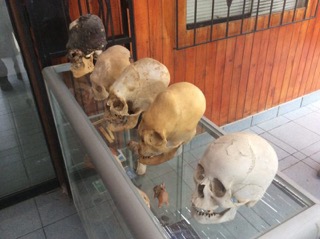
We visited the Paracas History Museum and inspected dozens of elongated skulls and other from the Paracas, Nazca, Wari, Cincha, and Inca cultures. I swear some of those skulls looked alien to me.
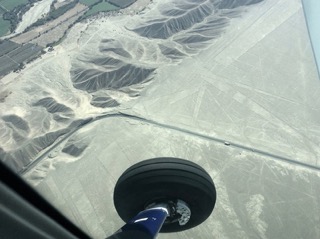
We flew over the Nazca Lines in a small 12 seater plane and inspected the mysterious ancient geoglyphs in the Nazca Desert in southern Peru. We had a bird’s eye view of hundreds of figures, made of straight lines and geometric shapes etched in the surface of the desert pampa sand. Most clearly visible from the air, our pilot did wing dips, side-to-side, so we could have the best possible views and click some super snapshots. We did.. The best-known geoglyph is “The Astronaut” at 32m in length discovered by Maria Reiche in the 1960s.
We travelled by boat to see the uninhabited Ballestas Islands. Rich in marine life, the islands are home to sea lions, pelicans, Peruvian boobies and Humboldt penguins. On the way our boat captain detoured to give us a closer look at a huge geoglyph in the form of a candelabra that sailors in ancient times used as a coastal reference point. The Candelabro, almost 500 feet high, is a bit of a mystery. Theories abound about who created the figure and why. I was satisfied with the most scientific sounding explanation — aliens.
On July 12th, we flew from Lima (sea level) to Cusco (Elevation: 11,152′) When the doors of the plane opened, I felt as if life got sucked out of me. Most others on the tour also experienced high altitude shock in one form or another. Unfortunately my vision became impaired. Fortunately, with time, it is slowly improving. According to my ophthalmologist, I have a macular pucker in my left eye. Bet the aliens didn’t have that problem.
And the highlight of 2016 for me was climbing to the top of Machu Picchu, Peru.
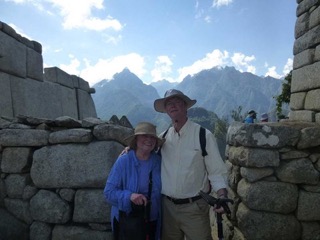
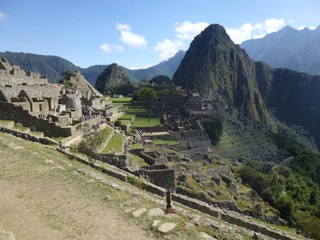
Magical! Mystical!
What is your most memorable moment of 2016?
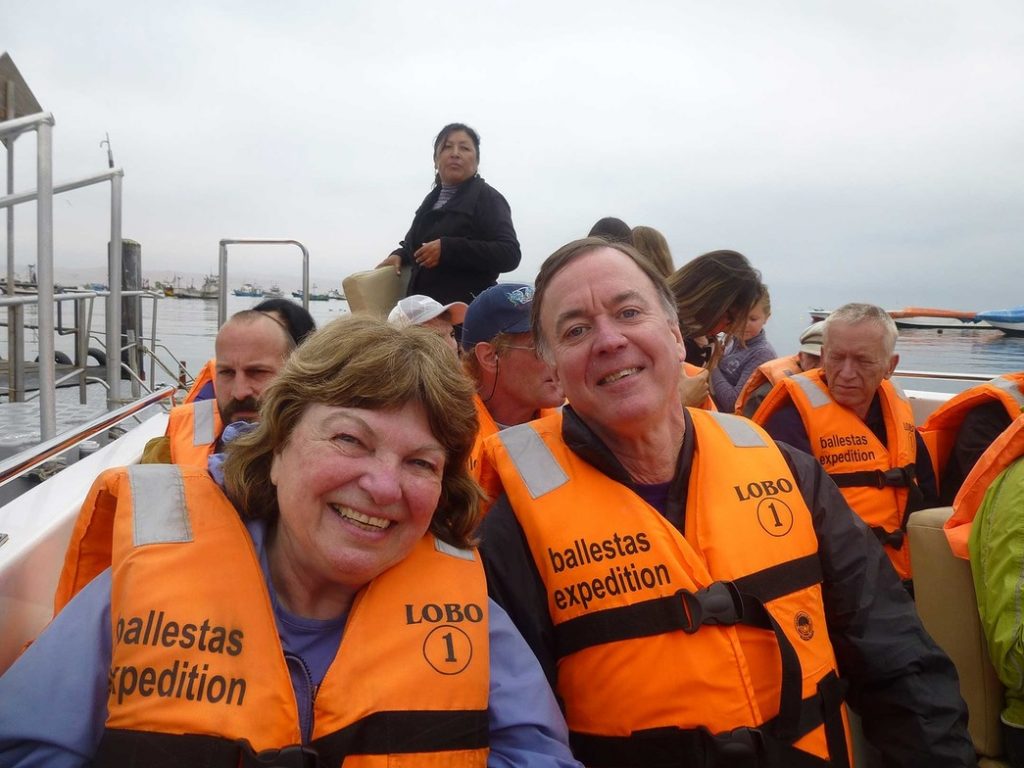
7 July, 2016
My husband Doug and I joined fellow travelers for an early breakfast in the hotel restaurant in order to be at the Paracas Port at 8:00 AM sharp and board the first fleet of sightseeing speedboats leaving for a tour of the Ballestas Islands. A group of rocky islands known for their abundant wildlife, the Ballestas are a protected home to thousands of birds and mammals including sea lions, Inca terns, the Humboldt penguins, and pelicans.
Visited by wildlife lovers from around the world, the Ballestas Islands are often referred to as Peru’s Galapagos. Tourists are not allowed to walk on the islands or swim with the animals but the sightseeing boats get you up close for a unique viewing of an important sanctuary for marine flora and fauna.
I recalled how my mom taught me the ‘handy’ way to distinguish the difference. ‘Flora sounds like a flower and fauna like a fawn.’ Plant life. Animal life. It did help me keep them straight on science tests. Snap. My mother was smart.
Our guide assured us that the 8 AM tour was the best possible time for good weather conditions and wildlife spotting. She said that winds and waves tend to get stronger later in the day and for this reason tours only leave in the morning when sea conditions are calmer. If the seas are too rough, the Navy closes the port and NO boats are permitted to leave.
Last minute, before boarding our bus for the dock, Doug reminded me to take my wind breaker with hood, in case it got chilly on the boat. We both took cameras hoping to see hundreds of sea lions and penguins, thousands of birds, and if lucky we might even see dolphins and take a dozen or so great photos.
We waited in a long line to board the waiting boats. I imagined calm waters and no wind. Perfect travel conditions. When the line began moving forward, I watched tourists load onto the first boat and was relieved to see life vests being secured for every passenger getting on board.
I touched Doug and pointed to the life jackets. “Remember Venezuela?”
He nodded. “Yep!”
I remembered the details. As author and illustrator of books for children, we were invited to speak and present writing and drawing workshops at the International School in Caracas in 1998.
Following our fun presentations in the school, we decided to join friends on a dive ship off the Caribbean coast of Venezuela and explore La Tortuga Island. It was named La Tortuga because marine turtles returned each year to lay their eggs on its long sandy beaches. Other than the seasonal fishermen the island was uninhabited. Untouched. Pristine.
Doug seemed surprised that I agreed to go along. After the harrowing crossing of the Indian Ocean in monsoon season in 1975, I hesitated to board any boat taking me too far from the safety of a shore. I decided it was time to let go of the fear.
The line moved forward and I inched back into today’s reality. Speedboats revved their engines when they left the pier and raced out to sea. The waters remained calm. Lucky us! We moved forward again and were directed down steps leading to a waiting boat.
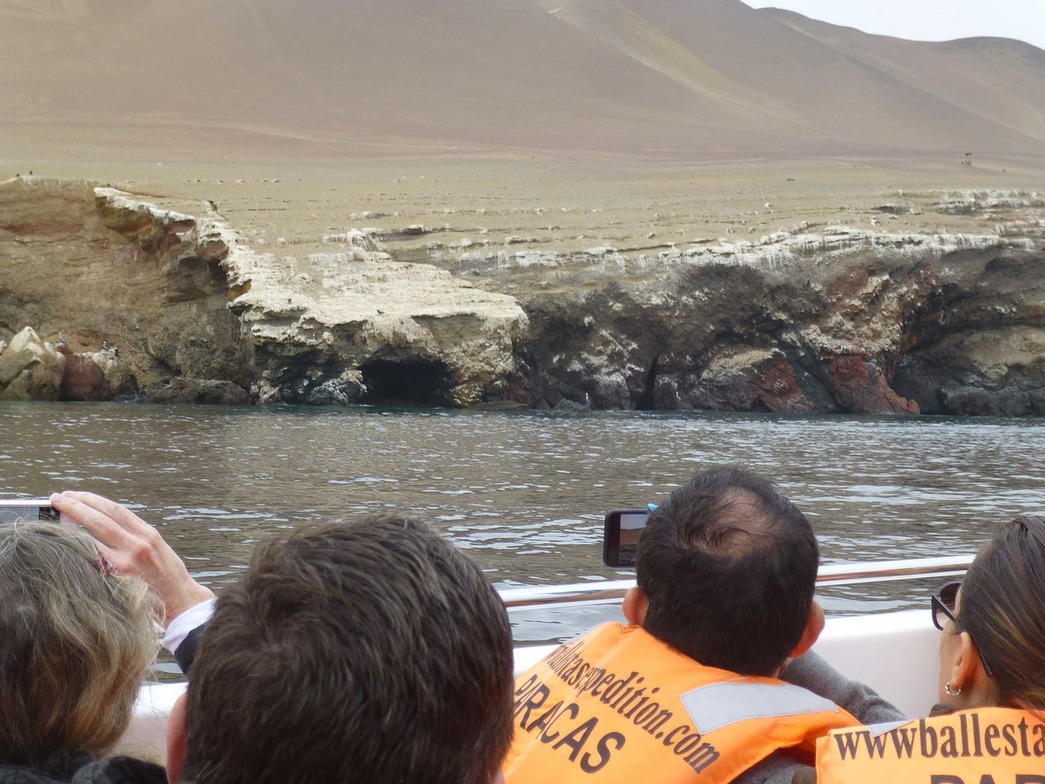
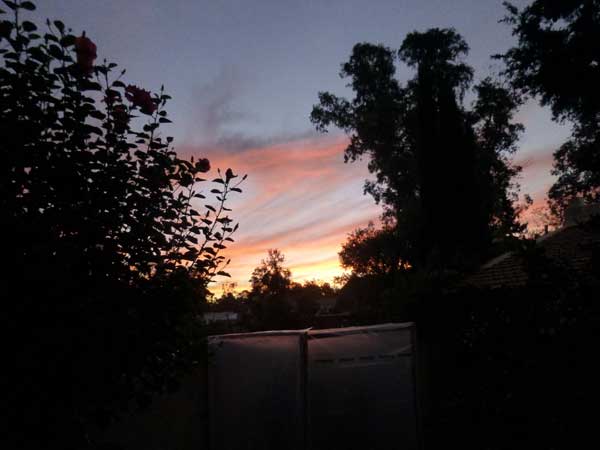
According to meteorologists winter is the three calendar months with the lowest average temperatures. In the Northern Hemisphere, December, January and February are the winter months. In the Southern Hemisphere, where we (my husband and I) spend most of the year, our coldest months are June, July and August.
In late June of 2014, I took this photo of a colorful sunset in our backyard in Atlantida, Uruguay. The view was framed and partially blocked by several fast growing Eucalyptus trees in our neighbor’s yard.
On 22 July 2016, when we returned home from an exciting tour of ancient civilization sites in Peru and Bolivia, I realized I missed sunshine. It was abundant during our travels closer to the equator. Looking out my office window, I saw a bleak winter sky blocked by rain clouds and the Eucalyptus trees; now towering 40 meters or so to our northwest.
The rain and clouds cleared a few days later, but my office continued to be dull. I wondered if painting the walls a bright color would help illuminate the dark room. Perhaps color would make up for the lack of natural light.

Early the next morning I heard the buzz of a chain saw and saw tree limbs falling from the neighbor’s yard. My upstairs office brightened when a rather large branch catapulted to the ground below. “Here comes the sun ….” I heard myself singing one of my favorite Beatle songs. I could hear a guitar strumming and drum beats humming as more branches fell.
I ran downstairs to tell Doug the good news. We walked outside into our garden and watched a guy with a chainsaw about half way up the tree yelling at a ground crew below. They yelled back and pulled on a long rope to show him where to drop his next cuts. The saw buzzed and more branches fell.
At this point, half the tree was gone. We marveled at the increase of light in our back yard. Doug mentioned that the neighbors will have a few years of good firewood out of this.
I smiled. “And we get the winter sun.” A real treat!
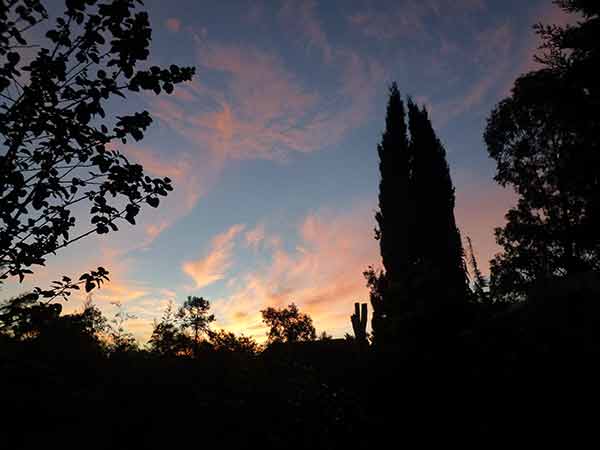

Our flight from Montevideo, Uruguay to Lima, Peru was a short four and a half hours, but leaving for the airport at 2:30 AM on 05 July 2016 meant little sleep the night before. No sleep on the plane and none after we arrived because our tour to explore “Lost Ancient Technologies and Consciousness Of The Ancients” started upon our arrival as we (my husband Doug and I) introduced ourselves to other fellow explorers and experts from around the globe. We were there to learn more about advanced technologies and view dozens of artifacts found in ancient Peruvian ruins now displayed in local museums. By seeing them with our own eyes, we would know if the evidence presented rang true for us.
Doug was aware of my two UFO sightings. One occurred on the island of Cyprus shortly before the Turks invaded in July of 1974 while I sat dining with friends at an outside table in the Kyrenia Harbor. Another happened when I was nine years old and living with my family on the outskirts of Tucson, Arizona. Fascinated with aliens and UFOs as a child, I became even more hooked after a silvery, metallic disk swooped down and hovered mid-air near my personal observation post on a flat hot rock. The alien ship was illuminated with bright colored flashing lights (reminded me of a child’s spinning toy top) and floated so close I could see two gray pilots with extra large, long foreheads and big saucer eyes. My dog Brownie never uttered a sound. In fact we were so shocked we couldn’t speak or move until the lights intensified and the craft lifted and disappeared.
When I asked Doug what piqued his curiosity about aliens and ancient civilizations, he mentioned Frank Edwards, an American writer and broadcaster who wrote a book called Stranger then Science —a collection of stories about strange happenings that science can’t explain.
The following morning, bright and early, we were on our way to Paracas, Peru to see strange things that science has yet to explain to my satisfaction.
As we left our renovated mansion hotel in the manicured, upscale Miraflores neighborhood of Lima, I noticed a sudden change of scenery from bright blue, green, and purple walls to lean-to tin slum dwellings. Next came rows of faded containers in the industrial section and our guide Brien explained that Peru is a self-sufficient country which produces everything but cars and electronics. Piles of rock and sand dotted the landscape waiting to be made into concrete for buildings, roads, and bridges. A green park at the next exit announced an approaching cemetery. Nice to see a spot of green grass and trees. We had left the bustling metropolis of Lima far behind and were heading south to Paracus to see elongated skulls in a local museum. En route, Brien told us a brief history of the Incas and presented interesting information about the elongated skulls cranial volume (25% larger than human skulls) and weight (60% more than human skulls).
Upon our arrival in Paracas, we checked into our resort hotel overlooking the Pacific Ocean and then boarded the bus to visit the small, private Paracas History Museum. This unusual museum had a superb collection of Peruvian elongated skulls, the star child skull, human remains, and a couple of mummies. I remembered first seeing elongated skulls in the anthropological museum, Museo de Antropología de Xalapa, in eastern Mexico in 2005.
As I looked closely at the skulls on display, a fellow traveler asked me for my opinion on whether they looked human or alien.
“Alien to me,” I answered. “I’m no expert, but I have seen aliens.”
“You’ve seen aliens in a UFO?” she asked. “I’m so jealous.”
“Yes. Twice.”
“Where? Did you have witnesses?”
“My dog was my only witness the first time in the Arizona desert.” I laughed. “The second time was on the island of Cyprus and two of my friends watched it with me. The strange looking pilots had extra large, long foreheads and big saucer eyes. Like these.” I pointed to the elongated skulls on display.
“Brilliant!” she smiled.
Later that evening over dinner in the hotel restaurant, I heard others in our tour discuss our guide Brien’s latest revelation about new genetic tests showing the elongated skulls contain extraterrestrial DNA—DNA previously unknown in any human, primate, or animal known so far.
“Very impressive,” I said. “I wonder if National Geographic will report it that way.”
Someone commented, “National Geographic views are like getting news from the Daily Mail.”
Giggles from EU residents seated nearby told me they also questioned National Geographic for accurate information.
I smiled remembering when as a kid I believed every word in each month’s issue to be gospel and truth about everything National Geo reported. It was well respected then. Not sensational. “I’m sure they reject the idea of alien heads.”
Conversation continued around the table as we discussed the scientific theory of binding the head and flattening it to make it grow a certain way. Artificial Cranial Deformation. And how changing the shape doesn’t increase the weight or size of a skull.
Remembering the side by side comparison of a real human skull next to the ancient elongated skull we had viewed in the museum earlier that day, I nodded. “For me, seeing is believing. Definitely alien. Cosmic!”
Lima Peru public park where hundreds of cats are adored and taken care of daily with food and water. And care if needed. Perfect place to sit and get your cat energy renewed. A treat!


